Scroll down to read this article in Spanish
PHYSALIA INNOVATES WITH MAD MMX EVENT TITLES
Unhindered by a fixed narrative framework, a designer’s only ‘limitations’ when designing an event title is creating a visual/metaphorical expression of the content and atmosphere of the event. And presenting the names of speakers and sponsors. And even though many events nowadays operate as brands that sell us an experience, designers tend to be more free in their interpretation of the event’s identity and their public image, as opposed to corporate brands or movies that tend to be more conservative. This freedom allows for some real innovation to happen within the field of event title design, as shown by the Mad MMX title sequence by the Spanish motion graphics and visual effects studio Physalia.
.jpg)
Staying true to the DIY credo, Physalia created an unpolished and bold but truly innovative piece of motion art. One of the most experimental title sequences we’ve come across recently.
“Taking advantage of the freedom we were being offered, we tried to take an experimental approach without using a storyboard or animatic, such as we would use for the kind of commercial project we usually work on,” explains Pablo Barquín, one of Physalia‘s designers. “Domestika, the event organisers, didn’t even ask to see anything of what we were doing until the actual festival premiere.” Physalia opted to ‘play’ with software developed by Kyle McDonald –a New York-based visual artist who created a simple and fast DIY 3D scanner, which he shares for free.
What sparked your interest in Kyle’s McDonald’s technology?
Pablo Barquín: “All technology to do with the production of visual effects interests us. Specifically, any method that allows us to scan physical objects to make them 3D gets our attention. A while ago, we experimented with laser scanners. And we discovered other commercial kits which allowed precision scanning, but they were outside our budget.
“After seeing the results Kyle got in one of his tests, we thought they were interesting enough to use as the basis for our piece. We looked for ways to make things a little more unusual, pushing the “breaks” and noises the system produced and we played around with all kinds of surfaces and objects to obtain that, constantly moving, electronic esthetic.
“After various scanning tests, we decided to begin by, somehow, sequencing the distinct video phases. We had the typography for all the festival participants, we had material from scanning an actual person, and lastly, we had the 3D reconstruction of this scanned data.”
Part of what makes this title sequence so compelling is the way that Physalia succeeded in integrating all these different visual effects and styles combined with live action in a motion design piece that does not feel fragmented, but instead expresses a single vision.
The process
“For the typography, we cut and pasted each letter against a black background,” says Barquín. “In this way we created distortions and interference, which worked well within the general esthetic of the video.
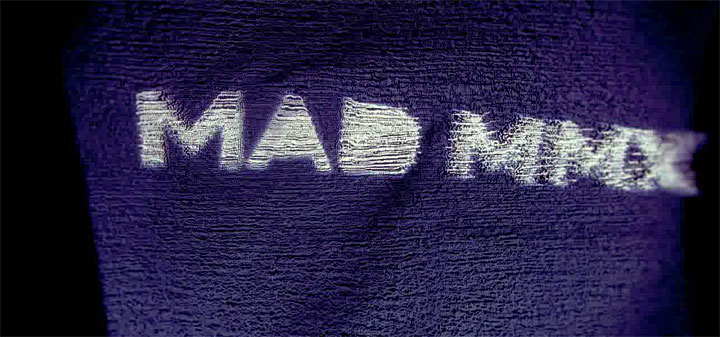
.jpg)
.jpg)
“For the conventional 3D sequence of the torso we used the mesh obtained from the scan and after treating and texturing it, we added the internal anatomy. The skin you can see in this bit was created using Kyle’s software. We optimized the number of polygons and textured the different parts to obtain a complete torso to which we added the internal anatomy. These parts are conventional 3D models which we adapted to achieve a faceted look and the low resolution we were seeking. To see the individual layers we used out-of-sync slices, so that the various internal parts can be seen.”
“Lastly, we added bits of live action footage and projected beams of light simulating the scanner’s patterns.”
Karin Fong used a similar 3D scan technology as a visual reference for her title sequence for Termination Salvation.
“There were a lot of references that served to help us find the esthetic and the editing style. For example: Radiohead‘s video clip “House of Cards” (YouTube) and all the variations created by people all over the world, thanks to the data for this video clip being available to download and try out. We were also inspired by Woody Vasulka & Brian O’Reilly‘s experimental work as well as Depeche Mode’s music video “Fragile Tension”
Article: Remco Vlaanderen, © Submarine Channel 2010. Last update: 28 March 2012.
Thanks to Motionographer for bringing this to our attention.
Spanish translation by Mahomi Valdez Cavero, with special thanks to Belén @Physalia.
PHYSALIA INNOVA CON LOS TÍTULOS DE CRÉDITO PARA EL MAD MMX
Sin los obstáculos de una estructura narrativa fija, la única “limitación” de un diseñador al crear unos títulos de crédito es crear una expresión visual/metafórica del contenido y la atmósfera del evento, presentando los nombres de los oradores y patrocinadores. Y a pesar de que muchos eventos hoy en día funcionan como marcas que nos venden una experiencia, los diseñadores tienden a ser más libres en su interpretación en la identidad del evento y su imagen pública, a diferencia de las marcas corporativas o películas que tienden a ser más conservadoras. Esta libertad permite que ocurran innovacionese resal en el campo de títulos de crédito, como lo demuestra la secuencia del título Mad MMX del estudio de efectos visuales españoles y motion graphics Physalia.
Manteniéndose fiel al credo de DIY (do it yourself = hazlo tu mismo), Physalia ha creado una pieza sin pulir, audaz, pero realmente innovadora del arte en movimiento, una de las secuencias de títulos más experimentales que hemos visto recientemente.
“Aprovechando la libertad que nos fue ofrecida, tratamos de tener un enfoque experimental sin utilizar un guión gráfico o animatic, como el que usaríamos para el tipo de proyecto comercial en el que solemos trabajar”, explica Pablo Barquín, uno de los diseñadores de Physalia. “Domestika, los organizadores del evento, ni siquiera pidieron ver nada de lo que estábamos haciendo hasta el estreno del festival.” Physalia optó por ‘jugar’ con software desarrollado por Kyle McDonald, un artista visual de Nueva York, que creó un escáner de DIY 3D sencillo y rápido que se comparte de forma gratuita.
¿Qué despertó su interés en la tecnología de McDonald’s de Kyle?
Pablo Barquín: “Toda la tecnología que tiene que ver con la producción de efectos visuales nos interesa. En concreto, cualquier método que nos permita escanear objetos físicos para que sean 3D nos llama la atención. Hace un tiempo, experimentamos con escáneres láser. Y descubrimos otros kits comerciales que permiten la presición de escaneo, pero estaban fuera de nuestro presupuesto.
“Después de ver los resultados conseguidos por Kyle en una de sus pruebas, pensamos que eran lo suficientemente interesantes como para utilizarlos como base de nuestra pieza. Buscamos maneras de hacer las cosas un poco más inusuales, empujando las “roturas” y los ruidos del sistema de producción, jugamos un poco con todo tipo de superficies y objetos para lograr que estuvieran en constante movimiento para conseguir una estética electrónica.
“Después de varias pruebas de scaner, se decidió comenzar, de alguna manera, la secuencia de las fases de vídeos distintos. Tuvimos la tipografía para todos los participantes del festival, había material de escaneo de una persona real, y, por último, tuvimos la reconstrucción 3D de los datos escaneados. “
Parte de lo que hace que esta secuencia de títulos sea tan atractiva es la forma en que Physalia ha hecho estos diferentes efectos de trabajo visual en esta pieza, y la combinacion con escenas de acción en vivo.
El proceso
“Para la tipografía, cortamos y pegamos cada letra sobre un fondo negro”, dice Barquín. “De esta manera hemos creado distorsiones e interferencias, lo que ha funcionado bien dentro de la estética general del vídeo.
Para la secuencia 3D convencional del torso se utilizó la malla obtenida del análisis y después de tratarla y texturarizarla, hemos añadido la anatomía interna. En este fragmento se puede ver que la piel se ha creado con el software de Kyle. Hemos optimizado el número de polígonos y texturas de las diferentes partes para obtener un torso completo a el que hemos añadido la anatomía interna. Estas piezas son convencionales modelos en 3D que adaptamos para conseguir una apariencia tallada y la baja resolución que estábamos buscando. Para ver las capas individuales se utilizó fuera de cortes de sincronización, de modo que las partes internas diferentes se pueden ver. “
“Por último, hemos añadido trozos de escenas de acción en vivo y rayos de luz proyectados que simulan los patrones del escáner”.
Karin Fong utilizó una tecnología de escaneos 3D similares como referencia visual para su secuencia de títulos para Termination Salvation.
“Había un montón de referencias que sirvieron para ayudarnos a encontrar la estética y el estilo de edición. Por ejemplo: clip de video de Radiohead, “House of Cards” (YouTube) y todas las variaciones creadas por personas de todo el mundo, gracias a los datos de este clip de vídeo que está disponible para descargar y probar. Nos inspiramos también por el trabajo experimental de Woody Vasulka y Brian O’Reilly, así como el vídeo musical de Depeche Mode “Fragile Tension”
More interviews in Spanish
Love in the Time of Cholera
El Búfalo de la Noche
Lucio
Year of production
2010
About Physalia
Physalia is a motion-graphics and visual effects studio in Barcelona. It was established in 2006 and consists of three people: Pablo Barquín, Marcos Coral and Mauro Gimferrer.
Full credits
Direction & Animation
Physalia
Title design
Pablo Barquín, Marcos Coral and Mauro Gimferrer
Music
Tinnitustudio (Alex Mediavilla & Egus)
3D Scanning Software
Kyle McDonald
Client
Domestika, Mad In Spain

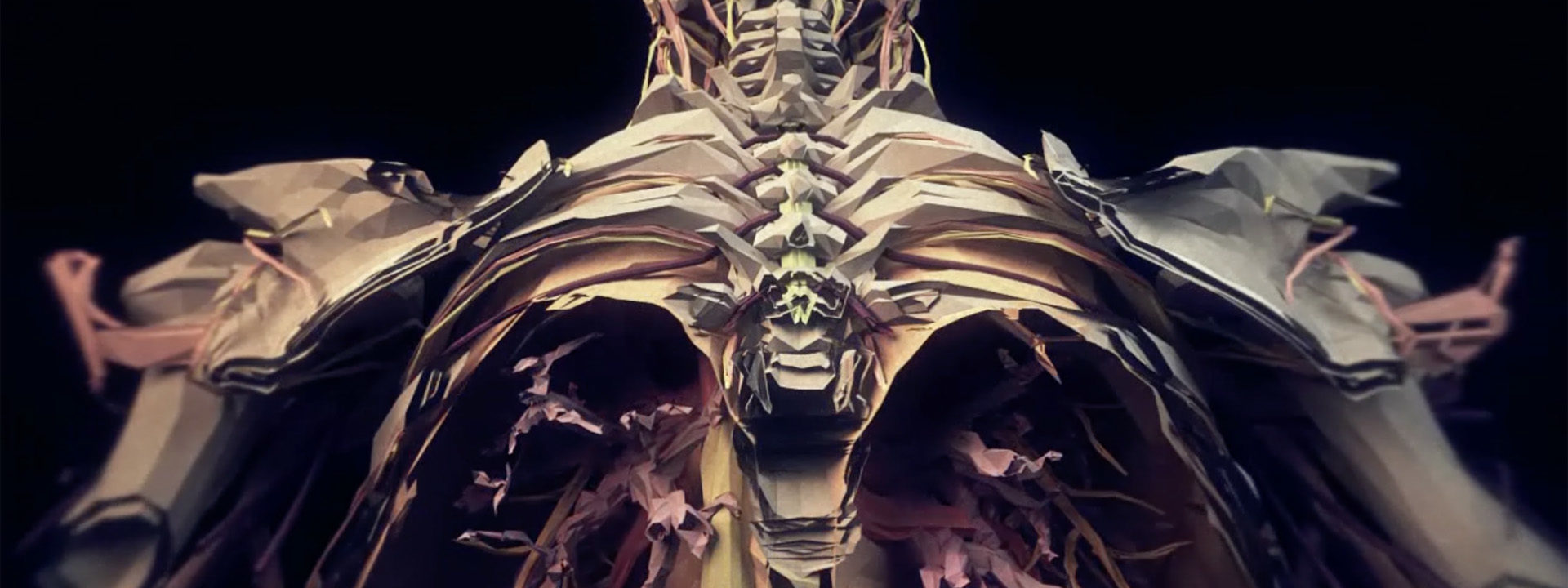
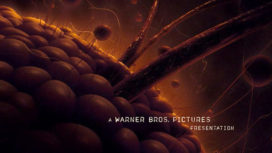

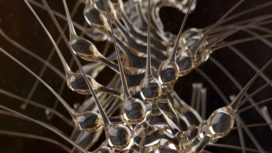

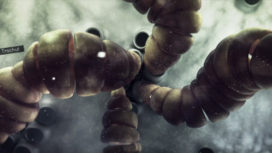
Really amazing piece !! Love the way you made it too 🙂
That’s creation !!